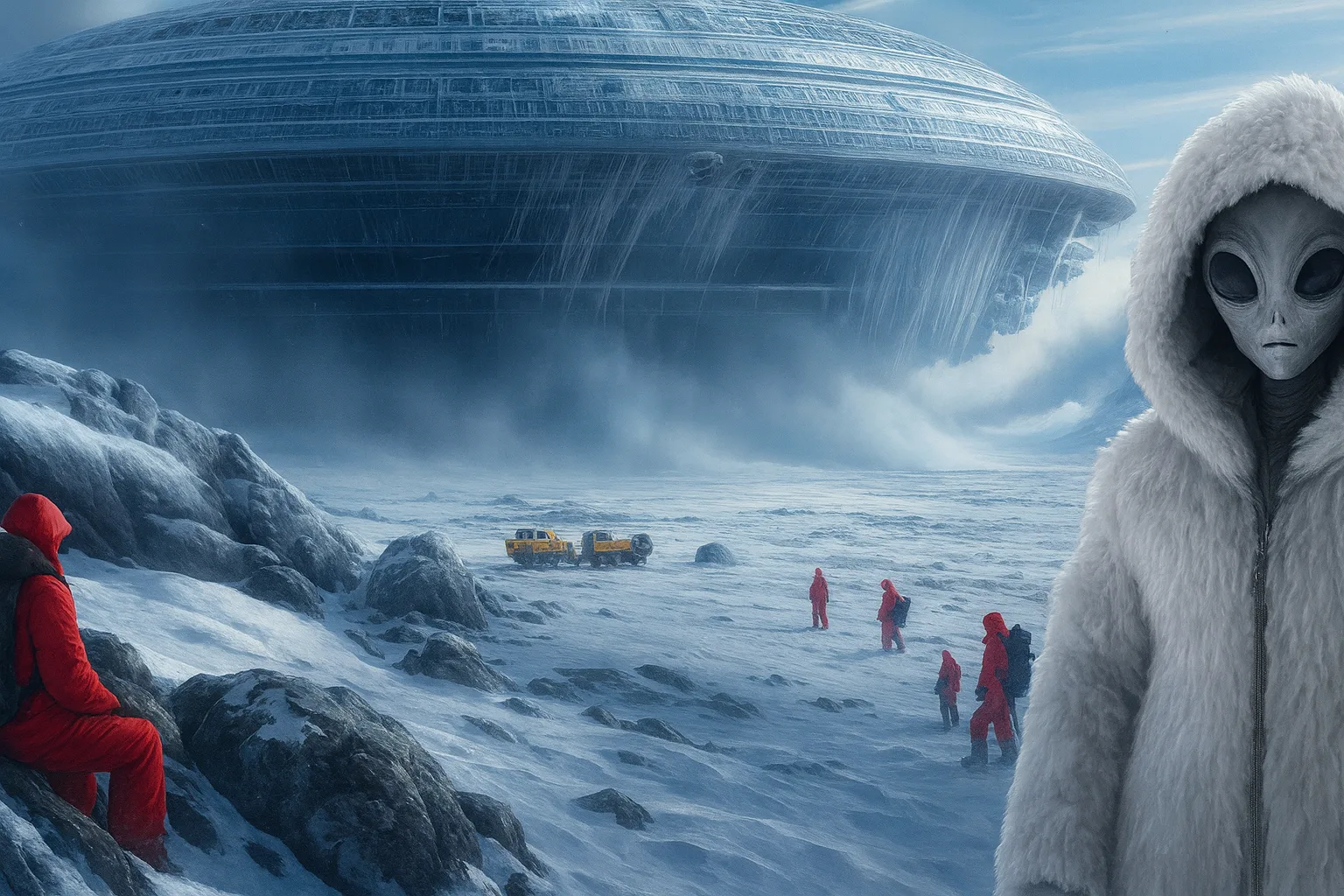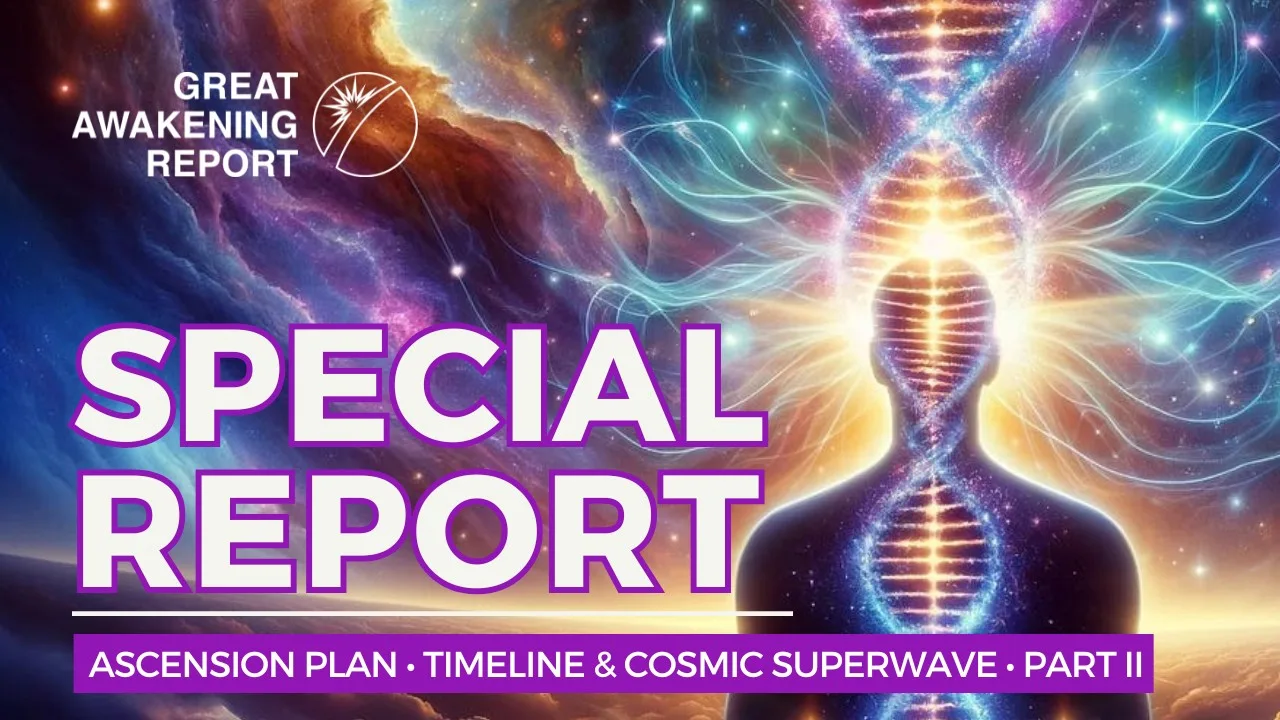Introduction to Antarctica’s Enigma
Antarctica, the continent shrouded in ice and mystery, remains one of the most intriguing places on Earth. It boasts unrivaled beauty, with its vast, icy landscapes and stunning natural formations that captivate adventurers and scientists alike. Covering over 14 million square kilometers, Antarctica is not just a frozen wilderness; it is a treasure trove of geological and climate history encapsulated beneath its ice sheets.
Beneath this pristine surface lies a world of secrets waiting to be uncovered. Geological studies suggest that the continent has undergone significant changes in the past, containing ancient ecosystems and evidence of climatic shifts over millions of years. As climate change continues to reshape the environment, researchers are increasingly focused on Antarctica, as it holds clues to understanding global weather patterns and sea-level rise [Australian Mining].
Moreover, recent technological advancements are facilitating deeper exploration and data collection in this harsh environment. For instance, remote sensing and advanced data-management tools are revolutionizing the way scientists monitor changes in ice thickness and glacier stability, providing invaluable insights into how melting ice impacts global sea levels [Farm Progress].
As we delve deeper into the heart of Antarctica, we reveal not only its breathtaking landscapes but also its critical role in our planet’s future and the intertwined fate of humanity and nature. Embracing the enigma of Antarctica may unlock better understanding and solutions for the challenges posed by climate change and environmental degradation.
The History of Antarctic Exploration
Antarctic exploration has a rich and intriguing history that spans various epochs, reflecting humanity’s quest for knowledge and adventure. The known journey began in the early 19th century, but earlier voyages laid the groundwork for later expeditions.
The first conjectures about a southern continent date back to ancient Greece, where philosophers like Aristotle speculated about its existence to balance the northern lands. However, it wasn’t until the Age of Exploration (15th-17th centuries) that European expeditions began actively seeking these distant territories. Notable explorers such as Ferdinand Magellan and James Cook charted southern latitudes, with Cook becoming the first to cross the Antarctic Circle in 1773, laying the foundation for future exploration.
The first confirmed sighting of Antarctica occurred on January 27, 1820, by a Russian expedition led by Fabian Gottlieb von Bellingshausen and Mikhail Lazarev, which marked a significant milestone in the exploration of the southern continent. Subsequent expeditions followed, including those of John Ross and James Clark Ross in the 1830s-1840s, who mapped parts of the coast and conducted significant scientific investigations. The discovery of the Antarctic continent spurred the establishment of research stations and exploratory missions that emphasized scientific inquiry, especially during the Heroic Age of Antarctic Exploration in the early 20th century.
Prominent figures during this period included Ernest Shackleton, whose 1914-1917 Imperial Trans-Antarctic Expedition, although ultimately aimed at crossing the continent, was marked by heroism and survival after his ship, the Endurance, was trapped and crushed by pack ice. This era laid a comprehensive understanding of Antarctica’s geography and environment.
After World War II, the Antarctic Treaty System established the continent as a zone for peaceful research and international cooperation, leading to the establishment of numerous research stations from various countries, furthering scientific discoveries regarding climate, biology, and geology. Today, Antarctica continues to be a focal point for climate change research, shedding light on global environmental issues.
The evolution of Antarctic exploration has not only revealed fascinating insights into one of Earth’s most extreme environments but has also underscored the importance of international collaboration in scientific endeavors [Farm Progress][Source: Australian Mining][Source: BCIS].
Geological Wonders Beneath the Ice
Beneath the expansive ice sheets of Antarctica lies a diverse array of geological formations, including mountain ranges and ancient volcanic constructs, that reveal a dynamic geologic history shaped by the planet’s tectonic activities. This remote continent features several significant mountain ranges, the most notable being the Transantarctic Mountains, which stretch over 3,500 kilometers (about 2,175 miles) and serve as a natural divide between East and West Antarctica. These mountains were formed through a combination of tectonic uplift and erosion over millions of years, offering insights into the geological processes that have occurred in this harsh environment [ABC News].
Additionally, Antarctica is home to several ancient volcanoes, some of which remain active. Mount Erebus, for instance, is one of the most active volcanoes in the world, featuring a persistent lava lake that offers scientists an opportunity to study volcanic processes in extreme conditions Scientific American. Other formations, like the Ellsworth Mountains and the Marie Byrd Land volcanic province, demonstrate the complex interplay of volcanic activity and glacial forces.
Recent studies have also indicated that beneath the ice, rivers and lakes exist, shaped by subglacial volcanic activity, which contributes to movement within the ice sheet [Nature]. This interplay is critical for understanding global sea-level rise and the impact of climate change on the Antarctic ice sheet.
Understanding these geological features not only aids in deciphering Antarctica’s past but is also crucial for predicting future changes as the effects of climate change continue to unfold. The complex geological activity beneath the ice showcases the dynamic nature of Earth’s processes, even in the most extreme environments. For further reading on geological insights, consider our related article on volcanic activity here.
The Ecosystem of Ice: Unexpected Life Forms
The icy environments of our planet, such as Antarctica and the Arctic, host an array of life forms that have adapted in extraordinary ways to survive in extreme conditions. Notably, microbial life thrives in these frozen realms, showcasing resilience in the face of harsh climates. For instance, microorganisms known as psychrophiles can multiply at temperatures near freezing, utilizing unique enzymes that function optimally in cold environments. They play crucial roles in nutrient cycling and are instrumental in understanding life beyond Earth, as they provide insights into possible extraterrestrial life forms that could exist in cold conditions on other planets, such as frozen moons like Europa and Enceladus [Frontiers in Microbiology].
Beyond microbes, some amazing multicellular organisms have also adapted to the icy ecosystem. The Antarctic icefish, for example, has evolved antifreeze glycoproteins that prevent their blood from freezing, allowing them to thrive in freezing waters. This adaptation not only permits survival but also gives them a competitive edge in the nutrient-scarce polar waters [Royal Society Publishing]. Additionally, certain species of seals and penguins exhibit specialized behaviors, such as cooperative hunting and thermoregulation strategies, which enable them to maintain body temperature against the frigid backdrop of ice.
The interaction between these unique organisms contributes to the stability and health of polar ecosystems, making them vital for the geological and biological processes observed in these regions. Understanding these adaptations not only enhances our knowledge of biodiversity but also the overall impact of climate change on such extreme habitats [Nature].
Climate Change and Its Impact on Antarctica
Climate change is profoundly affecting Antarctica, resulting in significant implications for global sea levels and ecosystems. The continent’s ice sheets are melting at an alarming rate, largely due to rising temperatures caused by climate change. According to the latest research, the Antarctic ice sheet is losing more than 250 billion tons of ice annually, contributing approximately 0.7 mm to global sea level rise each year. If current trends continue, projections indicate that sea levels could rise by more than three feet by the end of the century, posing a severe threat to coastal communities around the world [National Geographic].
The impact of this melting ice extends beyond just rising sea levels. As the ice diminishes, it disrupts local ecosystems that rely on the stability of the ice sheet for habitat. Species such as the Antarctic krill, which play a crucial role in the food web, are facing challenges as their habitat changes due to warming waters and loss of sea ice. This shift can also affect species at higher trophic levels, including penguins and seals, which depend on krill as a food source [ScienceDirect].
Additionally, the melting of the ice sheets is projected to release long-sequestered greenhouse gases, such as methane and carbon dioxide, further exacerbating global warming cycles [Scientific American]. This feedback loop will create increasingly worrisome ecological consequences, influencing weather patterns and climate variability far beyond Antarctica itself.
In conclusion, the ongoing impacts of climate change on Antarctica are likely to have far-reaching effects, influencing global sea levels and disrupting ecological balances both locally and internationally. The urgency to mitigate climate change has never been clearer, as the consequences of inaction will resonate across ecosystems and human societies alike.
Hidden Lakes and Water Systems
Hidden beneath the icy expanse of Antarctica lies a remarkable network of subglacial lakes and rivers that plays a critical role in understanding global climate patterns and supporting diverse ecosystems. These hidden water systems, primarily fed by glacial meltwater, are significant not only for their potential contributions to rising sea levels but also for their unique ecological niches that may offer insights into biodiversity in extreme environments.
Research indicates that there are over 400 subglacial lakes in Antarctica, many connected through a complex system of rivers formed by the pressure of the ice above, which melts the ice at the base due to geothermal heat. This dynamic environment creates unique habitats where extremophiles, organisms that thrive in extreme conditions, can flourish, thus contributing to our understanding of life’s resilience and adaptability [Scientific American].
Moreover, these subglacial lakes are crucial to our understanding of climate change; as the ice sheets melt, they could release large amounts of freshwater into the ocean, impacting global temperatures and ocean currents. The interplay between these lakes and the overlying ice structure modifies the flow of ice streams, which has direct implications for ice sheet stability and sea level rise [Proceedings of the National Academy of Sciences].
In essence, the study of subglacial water systems provides vital clues regarding the planet’s climatic history and future, offering perspectives not just on Antarctica but on global climate dynamics, biodiversity conservation, and the adaptability of life on Earth [Nature].
Antarctica in Popular Culture: Myths vs. Reality
Antarctica’s representation in popular culture often oscillates between myth and reality, fueled by its extreme environment and the mysteries surrounding it. Literature and films frequently depict it as a land of secrets, monsters, or ancient civilizations, captivating audiences’ imagination. Stories such as H.P. Lovecraft’s “At the Mountains of Madness” delve into tales of ancient alien civilizations lurking beneath the ice, creating a sense of intrigue and suspense around this untouched wilderness [Farm Progress].
Conversely, the reality of Antarctica is starkly different. Scientific research reveals it as a crucial indicator of climate change, serving as a barometer for global warming due to its massive ice sheets and unique ecosystems. Researchers often work in extreme conditions to gather invaluable data about our planet’s health, focusing on topics like ocean circulation and ice melt that are far removed from the fictional myths that adorn popular culture [Australian Mining].
Media portrayals of Antarctica can also reinforce myths about unsolved mysteries and conspiracies, suggesting hidden bases or unexplained phenomena, which distract from the legitimate scientific explorations taking place. This blending of fiction and reality often shapes public perception more than empirical data, highlighting a fascinating narrative dynamic present in how we view one of the Earth’s last frontiers [BCIS].
Future Expeditions: What Lies Ahead?
Antarctic exploration is poised for significant advancements, thanks to emerging technologies that promise to unveil the secrets of this remote region. Autonomous drones and under-ice robotic vehicles are set to revolutionize the way researchers collect data, enabling them to navigate the harsh and inaccessible environments of Antarctica more efficiently than ever before. For instance, these drones can be equipped with high-resolution imaging and thermal sensors to monitor wildlife and icy landscapes without disturbing the fragile ecosystem [Farm Progress].
Furthermore, data management systems analogous to those being utilized in other sectors, such as mining, are being adapted for Antarctic research. Technologies like Sandvik’s Newtrax platform enable researchers to capture and validate data in remote conditions, ensuring data reliability even when connectivity is minimal [Australian Mining]. As new monitoring techniques emerge, scientists will be better equipped to address climate change and its impacts on Antarctica’s ice sheets, ultimately enhancing their understanding of global sea-level rise.
In addition to robotic technologies, there is growing interest in integrating artificial intelligence and machine learning to analyze oceanographic and atmospheric data. This can lead to predictive models that help environmental scientists understand how changes in the Antarctic environment may influence global weather patterns. As these technologies continue to develop, the next generation of Antarctic explorers will uncover insights that were previously beyond reach, fostering a deeper understanding of the planet’s climactic systems and ecological integrity.
Sources
Australian MiningFarm ProgressBCISABC NewsScientific American NatureGreat Awakening ReportFrontiers in MicrobiologyRoyal Society PublishingNatureNational GeographicScienceDirectScientific AmericanProceedings of the National Academy of SciencesNature
Share This Report
Have questions?
At Great Awakening Report, we are dedicated to supporting your journey toward truth and enlightenment through our specialized Coaching and Consulting services.
Coaching Services: Our coaching programs are designed to guide you through personal awakening and transformation. We offer personalized sessions that focus on expanding consciousness, uncovering hidden truths, and fostering spiritual growth. Our experienced coaches provide the tools and insights necessary to navigate your path with clarity and confidence.
Consulting Services: For organizations and individuals seeking deeper understanding and strategic guidance, our consulting services offer expert analysis and solutions. We delve into areas such as global transitions, alternative news insights, and consciousness studies to provide comprehensive strategies tailored to your unique objectives.
Embark on a transformative journey with our Coaching and Consulting services, and unlock your highest potential. To learn more and schedule a session, visit our Coaching and Consulting pages.
Thank you
Thank you to our subscribers and readers for your continued support and dedication to truth and awakening. Your encouragement, engagement, and belief in our mission make everything we do possible. Together, we are expanding awareness and helping illuminate the path forward.
If you would like to further support the Great Awakening team and our ongoing efforts to share insight, knowledge, and truth, you can DONATE HERE.
With deep gratitude,
– Great Awakening Team
DISCLAIMER: All statements, claims, views and opinions that appear anywhere on this site, whether stated as theories or absolute facts, are always presented by The Great Awakening Report (GAR) as unverified—and should be personally fact checked and discerned by you, the reader.Any opinions or statements herein presented are not necessarily promoted, endorsed, or agreed to by GAR, those who work with GAR, or those who read or subscribe to GAR.Any belief or conclusion gleaned from content on this site is solely the responsibility of you the reader to substantiate.Any actions taken by those who read material on this site are solely the responsibility of the acting party.You are encouraged to think for yourself and do your own research.Nothing on this site is meant to be believed without question or personal appraisal.
COPYRIGHT DISCLAIMER: Citation of articles and authors in this report does not imply ownership. Works and images presented here fall under Fair Use Section 107 and are used for commentary on globally significant newsworthy events. Under Section 107 of the Copyright Act 1976, allowance is made for fair use for purposes such as criticism, comment, news reporting, teaching, scholarship, and research.
COMMUNITY GUIDELINES DISCLAIMER: The points of view and purpose of this video is not to bully or harass anybody, but rather share that opinion and thoughts with other like-minded individuals curious about the subject.










